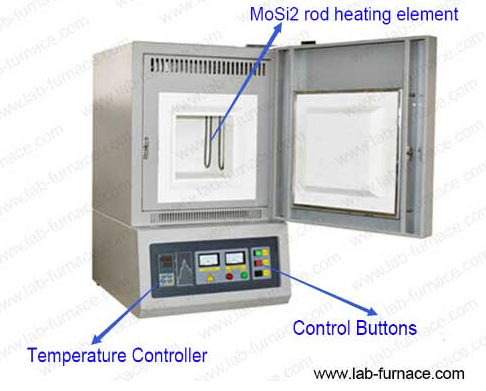


NEWS
There are significant differences between tube furnaces and muffle furnaces in multiple aspects, mainly reflected in their structure, function, application scenarios, and calcination effects. Let's take a detailed look at the differences between tube furnaces and muffle furnaces below!
1. Structure and Composition
Tube furnace: mainly composed of shell, insulation layer, heating device, and control system. The shell is often made of materials such as stainless steel or aluminum alloy, and the insulation layer is used to reduce energy loss. Heating devices such as resistance wires, silicon carbon rods, silicon molybdenum rods, etc. are responsible for generating high temperatures. The design of the tube furnace enables it to handle samples with small volumes or requiring specific atmospheres.
Muffle furnace: also known as box type resistance furnace, its structure is relatively complex, including shell, insulation layer, furnace and heating elements. The shell is usually welded from angle steel and steel plate, and the insulation layer is made of lightweight insulation bricks or aluminum silicate cotton materials. The furnace is generally rectangular, and different heating elements can be selected according to needs, such as electric heating wires, silicon carbon rods, etc. The design of the muffle furnace enables it to handle larger volumes of workpieces or samples.
2. Functions and Applications
Tube furnace: widely used in device processing in metallurgy, electronics, ceramics, glass, chemical and other industries, as well as sample heating for chemical analysis and physical identification in the laboratory. Tube furnaces can provide a uniform heating environment, are easy to operate, and have low energy consumption. In addition, the tube furnace also has multiple models and configurations, such as vacuum tube furnace, atmosphere tube furnace, etc., to meet different experimental and production needs.
Muffle furnace: As a universal heating device, Muffle furnace is widely used in various fields such as coal, petroleum, electric heating, building materials, chemical industry, etc. It is mainly used for element analysis and determination, steel annealing, tempering and other heat treatments, as well as high-temperature heating processes such as sintering, dissolution and analysis of metals and ceramics. The muffle furnace has the advantages of fast heating speed, precise temperature control, and low thermal pollution, which can meet various high-temperature heating needs.

The muffle furnace is a box type structure (click on the picture to view product details)
3. Calcination effect
Tube furnace: Due to the fixed and relatively small furnace diameter, its production capacity is correspondingly small. During the calcination process, the tube furnace may not be able to fully integrate with the air, resulting in incomplete calcination. This requires special attention to controlling the calcination conditions when using a tube furnace to ensure that the sample is fully calcined.
Muffle furnace: Due to its adjustable path and large furnace, the production capacity of Muffle furnace is relatively large. During the calcination process, the muffle furnace can completely blend with air, allowing the sample to be fully calcined. This makes the muffle furnace more advantageous in situations where large quantities of samples need to be processed or higher calcination efficiency is required.
4. Operation and maintenance
Tube furnace: relatively easy to operate, equipped with a convenient control system for intelligent operation, and capable of remote monitoring of equipment status. However, care should be taken to avoid damaging the heating elements and furnace materials during use, and regular inspections and maintenance should be carried out to ensure the normal operation of the equipment.
Muffle furnace: It also has a relatively simple operation method, but due to its relatively complex structure and high operating temperature, more attention needs to be paid to safety and stability during operation and maintenance. Before use, it is necessary to check whether the equipment is in good condition and installed correctly; During use, it is necessary to strictly follow the operating procedures and regularly check whether the electrical connections and heating elements of the equipment are working properly.

Vacuum atmosphere tube furnace (click on the picture to view product details)
So, there are significant differences between tube furnaces and muffle furnaces in terms of structure, function, application scenarios, and calcination effects. When choosing which equipment to use, it is necessary to consider comprehensively based on specific experimental or production needs.Click to learn more tube furnaces! Or click on online customer service to learn more about product information!
Leave A Message